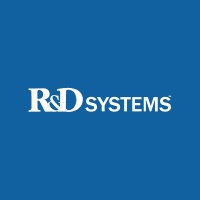KLRC1 / Alexa Fluor 647 / 2097C
Product Details
| Description | Mouse NKG2A/CD159a Alexa Fluor 647-conjugated Antibody | |
|---|---|---|
| Conjugate | Alexa Fluor 647 | |
| Clone | 2097C | |
| Target Species | Mouse | |
| Applications | FC | |
| Supplier | R&D Systems | |
| Catalog # | Sign in to view product details, citations, and spectra | |
| Size | ||
| Price | ||
| Antigen | ||
| Host | ||
| Isotype |
About KLRC1
Natural killer (NK) cells are lymphocytes that can mediate lysis of certain tumor cells and virus-infected cells without previous activation. They can also regulate specific humoral and cell-mediated immunity. The protein encoded by this gene belongs to the killer cell lectin-like receptor family, also called NKG2 family, which is a group of transmembrane proteins preferentially expressed in NK cells. This family of proteins is characterized by the type II membrane orientation and the presence of a C-type lectin domain. This protein forms a complex with another family member, KLRD1/CD94, and has been implicated in the recognition of the MHC class I HLA-E molecules in NK cells. The genes of NKG2 family members form a killer cell lectin-like receptor gene cluster on chromosome 12. Multiple alternatively spliced transcript variants encoding distinct isoforms have been observed. [provided by RefSeq, Jan 2015]
Natural killer (NK) cells are lymphocytes that can mediate lysis of certain tumor cells and virus-infected cells without previous activation. They can also regulate specific humoral and cell-mediated immunity. The protein encoded by this gene belongs to the killer cell lectin-like receptor family, also called NKG2 family, which is a group of transmembrane proteins preferentially expressed in NK cells. This family of proteins is characterized by the type II membrane orientation and the presence of a C-type lectin domain. This protein forms a complex with another family member, KLRD1/CD94, and has been implicated in the recognition of the MHC class I HLA-E molecules in NK cells. The genes of NKG2 family members form a killer cell lectin-like receptor gene cluster on chromosome 12. Multiple alternatively spliced transcript variants encoding distinct isoforms have been observed. [provided by RefSeq, Jan 2015]
About Alexa Fluor 647
Alexa Fluor™ 647 (AF647, Alexa 647) has an excitation peak at 650 nm and an emission peak at 665 nm, and is spectrally similar to Cy®5 (GE Healthcare), iFluor® 647 (ATT Bioquest), and DyLight™ 650 (Thermo Fisher Scientific). Alexa 647 is commonly used for flow cytometry, microscopy, super-resolution microscopy applications. It is very bright, photostable, and pH insensitive, all of which contribute to sensitive detection while using this dye.
Alexa Fluor™ 647 (AF647, Alexa 647) has an excitation peak at 650 nm and an emission peak at 665 nm, and is spectrally similar to Cy®5 (GE Healthcare), iFluor® 647 (ATT Bioquest), and DyLight™ 650 (Thermo Fisher Scientific). Alexa 647 is commonly used for flow cytometry, microscopy, super-resolution microscopy applications. It is very bright, photostable, and pH insensitive, all of which contribute to sensitive detection while using this dye.
Experiment Design Tools
Panel Builders
Looking to design a Microscopy or Flow Cytometry experiment?
Validation References
Reviews & Ratings
| Reviews |
|---|
Looking for more options?
363 KLRC1 antibodies from over 18 suppliers available with over 40 conjugates.





